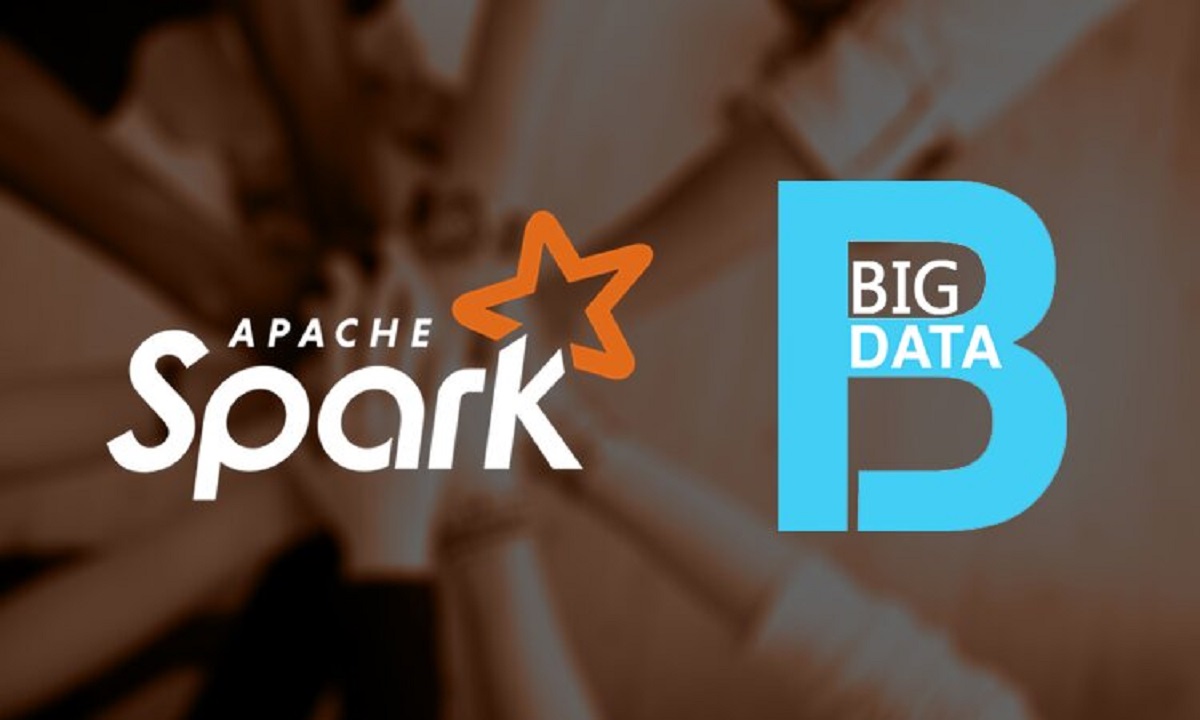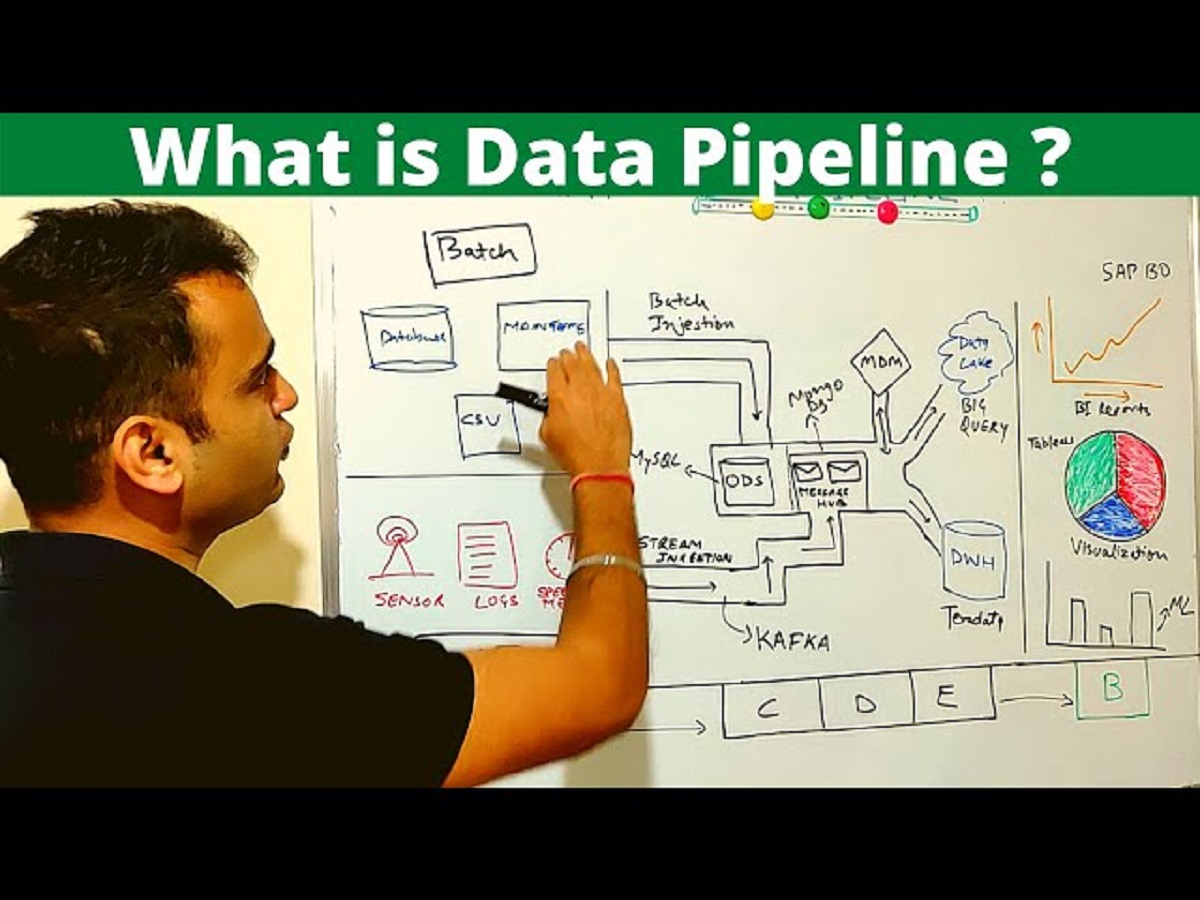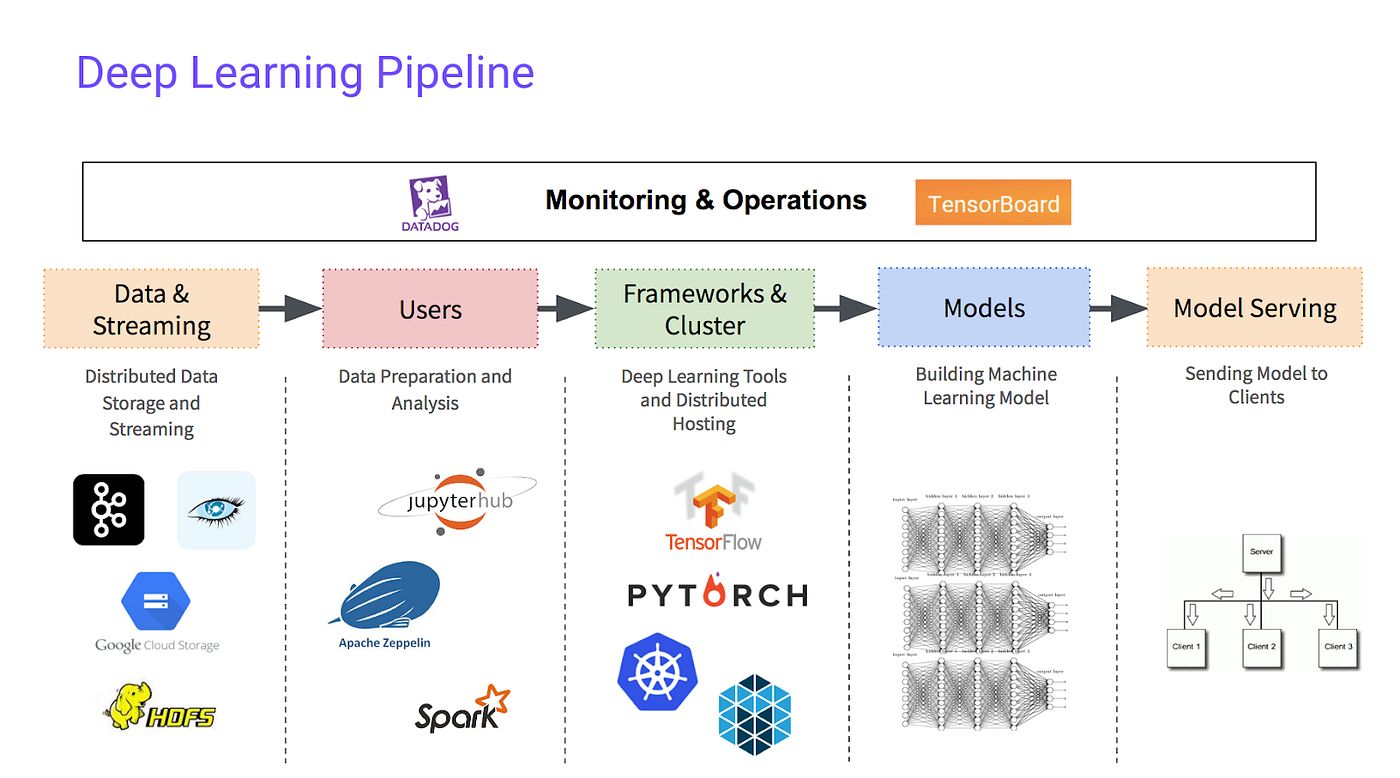Introduction
As the digital landscape continues to grow exponentially, the amount of data being generated is reaching unprecedented levels. This surge in data, known as Big Data, presents both opportunities and challenges for businesses and organizations across all industries. To harness the power of Big Data, it is essential to have the right tools and techniques in place.
In this article, we will explore how to handle Big Data using Python, a versatile and popular programming language. Python offers a wide range of libraries and frameworks that make it an excellent choice for processing and analyzing large datasets. Whether you’re a data scientist, a developer, or a business professional, understanding how to handle Big Data in Python can give you a competitive edge.
Before diving into the technical aspects, let’s first clarify what exactly Big Data is. Big Data refers to extremely large and complex datasets that cannot be easily managed with traditional data processing methods. These datasets come from various sources, such as social media, e-commerce transactions, sensor data, and more. Big Data is characterized by its volume, velocity, variety, and veracity.
The challenges associated with Big Data are twofold. Firstly, there is a storage challenge. Storing vast amounts of data requires robust infrastructure and efficient data management techniques. Secondly, there is an analysis challenge. Extracting meaningful insights from Big Data can be daunting due to its size and complexity. Traditional data analysis tools and techniques may not be suitable for handling Big Data effectively.
Python provides several libraries and frameworks that address these challenges and facilitate the processing and analysis of Big Data. By leveraging these tools, developers and data scientists can efficiently handle and derive insights from massive datasets.
In the following sections, we will delve into the various aspects of handling Big Data in Python. We will explore how to set up a Python environment for Big Data processing, use popular libraries like Pandas for data manipulation and analysis, optimize code for faster processing, utilize distributed computing frameworks like Dask, leverage machine learning algorithms for Big Data analysis, and visualize Big Data using Python libraries.
Let’s get started and unlock the power of Big Data with Python!
What is Big Data?
Big Data refers to the vast amounts of data that are generated and collected at an unprecedented scale in today’s digital world. The term “Big Data” encompasses data that is too massive, complex, and diverse to be processed and analyzed using traditional data processing methods.
The three defining characteristics of Big Data are known as the three V’s: volume, velocity, and variety.
Volume: Big Data is characterized by its sheer volume. Traditional data processing methods are not capable of handling the enormous amount of data that is being generated every second. Big Data can range from terabytes to petabytes and even exabytes of information.
Velocity: The velocity at which data is generated and collected is another key aspect of Big Data. With the advent of social media, internet of things (IoT) devices, and other digital technologies, data is being produced and shared in real-time. Processing this data in near-real-time or even real-time is crucial for extracting timely insights.
Variety: Big Data comes in various forms and formats. It includes structured data, such as tables and spreadsheets, as well as unstructured data, such as text documents, images, videos, and social media posts. Big Data encompasses a wide range of data types, from text and numerical data to geospatial and temporal data.
In addition to the three V’s, Big Data also poses challenges related to data veracity and value. Veracity refers to the reliability and accuracy of the data, as Big Data often contains noise, errors, and inconsistencies. Ensuring the validity and quality of the data is crucial for drawing meaningful insights. Value, on the other hand, refers to the potential insights and value that can be extracted from Big Data. By analyzing and interpreting Big Data, businesses can gain valuable insights into consumer behavior, market trends, and other critical factors that drive decision-making.
Big Data has numerous applications across various industries. It has transformed the fields of marketing, finance, healthcare, transportation, and many others. By harnessing the power of Big Data, organizations can gain a competitive advantage by making data-driven decisions, optimizing operations, improving customer experiences, and identifying new growth opportunities.
Handling and extracting value from Big Data is a complex task that requires powerful tools and technologies. Python, with its rich ecosystem of data processing and analysis libraries, has emerged as one of the go-to languages for working with Big Data. In the following sections, we will explore the challenges of handling Big Data and how Python can be leveraged to overcome them.
Understanding the Challenges of Handling Big Data
Handling Big Data presents a unique set of challenges that require specialized techniques and tools. While Big Data offers immense value, its sheer volume, velocity, and variety can overwhelm traditional data processing methods. Let’s explore some of the key challenges associated with handling Big Data.
Data Storage: The exponential growth of data requires efficient data storage solutions. Storing and managing massive datasets requires robust infrastructure, including scalable storage systems and distributed file systems. Additionally, data compression and optimization techniques are necessary to minimize storage requirements and costs.
Data Processing: Processing vast amounts of data in a timely manner is one of the main challenges of handling Big Data. Traditional sequential processing methods cannot handle the velocity and volume of data generated in real-time. Parallel and distributed processing techniques are needed to process data in parallel across multiple machines or clusters.
Data Integration: Big Data often comes from diverse sources and in varied formats. Integrating and harmonizing these different data sources can be challenging. Inconsistent or incompatible data formats, naming conventions, and data quality issues require careful data integration processes.
Data Quality: Big Data often contains noise, errors, and inconsistencies, making data cleaning and quality assurance essential. Ensuring the accuracy, completeness, and reliability of the data is crucial for meaningful analysis and decision-making.
Data Privacy and Security: Big Data often contains sensitive information, including personal and financial data. Ensuring data privacy and protecting against security breaches and unauthorized access becomes critical. Implementing robust data security measures and adhering to data privacy regulations are essential for handling Big Data responsibly.
Data Analysis: Extracting valuable insights from Big Data requires advanced analytics techniques. Traditional data analysis methods may not be suitable due to the volume and complexity of Big Data. Advanced analytics techniques, including machine learning, artificial intelligence, and data mining, are needed to reveal patterns, trends, and correlations hidden within the vast datasets.
Data Visualization: Communicating the insights derived from Big Data effectively is vital for decision-making. The challenge lies in visually representing large and complex datasets in a meaningful and understandable way. Utilizing data visualization techniques and tools can help translate the insights into clear and actionable visualizations.
To address these challenges, Python provides a wide range of libraries and frameworks that enable efficient Big Data processing and analysis. Libraries like Pandas, NumPy, and SciPy provide powerful tools for data manipulation and analysis. Distributed computing frameworks like Dask offer parallel and distributed computing capabilities. Machine learning libraries such as TensorFlow and scikit-learn enable the development of predictive models for Big Data analysis.
By understanding and overcoming the challenges of handling Big Data, organizations can leverage the insights derived from these large datasets to make informed decisions, gain a competitive advantage, and drive innovation. In the following sections, we will explore how to set up a Python environment for Big Data processing and utilize various libraries and techniques to handle, analyze, and visualize Big Data effectively.
Setting up a Python Environment for Big Data Processing
Before diving into Big Data processing with Python, it’s essential to set up a suitable environment that can handle the large volume and complexity of data. Here are some steps to guide you in setting up a Python environment for Big Data processing.
1. Install Python: Start by installing Python on your system. Python is compatible with various operating systems and can be downloaded from the official Python website. Choose the latest stable version of Python to ensure compatibility with the latest libraries and frameworks.
2. Choose the Right IDE: Select an Integrated Development Environment (IDE) that suits your needs. Popular options include PyCharm, Jupyter Notebook, and Spyder. These IDEs provide a user-friendly interface for writing, testing, and debugging Python code.
3. Install the Necessary Libraries: Python offers a rich ecosystem of libraries for Big Data processing. Some essential libraries include:
- Pandas: A powerful library for data manipulation and analysis, Pandas provides high-performance, easy-to-use data structures and data analysis tools.
- Numpy: Numpy offers efficient numerical computing capabilities, including support for large multi-dimensional arrays and mathematical functions.
- SciPy: SciPy provides advanced scientific computing capabilities, including optimization, linear algebra, integration, and statistics.
4. Utilize Distributed Computing Frameworks: When dealing with Big Data, traditional sequential processing may not suffice. Distributed computing frameworks like Dask can help parallelize computations across multiple machines or clusters. Install and configure these frameworks to take advantage of their scalability and performance benefits.
5. Set up Storage and Data Management: Depending on the size and nature of your data, you may need to set up scalable and distributed storage solutions like Apache Hadoop or cloud-based storage services. These systems allow efficient storage and retrieval of Big Data.
6. Optimize Performance: Big Data processing can be time-consuming if not optimized. Optimize your Python code using techniques like vectorization, parallel processing, and caching. This can significantly speed up the processing time and improve overall performance.
7. Consider Cloud-based Solutions: Cloud-based solutions, such as Amazon Web Services (AWS) or Google Cloud Platform (GCP), provide scalable and cost-effective infrastructure for Big Data processing. Utilize their services, such as Amazon EMR or Google Dataproc, to leverage their distributed computing capabilities and manage Big Data efficiently.
8. Stay Updated: Big Data is a rapidly evolving field, and new tools and techniques are constantly emerging. Stay updated with the latest developments in Python libraries, frameworks, and best practices for Big Data processing.
By following these steps, you can set up a robust Python environment for handling Big Data. This environment will provide you with the necessary tools and capabilities to process, analyze, and derive valuable insights from large and complex datasets. In the next sections, we will explore how to utilize libraries like Pandas, optimize Python code for faster processing, and leverage distributed computing frameworks to efficiently handle Big Data in Python.
Using Pandas for Data Manipulation and Analysis
Pandas is a powerful and widely-used library in Python for data manipulation and analysis. It provides efficient data structures and data analysis tools that are essential for handling and exploring Big Data. Let’s explore how Pandas can be used for data manipulation and analysis in the context of Big Data processing.
Data Structures:
Pandas offers two primary data structures: Series and DataFrame. A Series is a one-dimensional labeled array that can hold any data type. It is similar to a column in a spreadsheet or a single feature in a dataset. A DataFrame, on the other hand, is a two-dimensional labeled data structure that consists of multiple Series arranged in tabular form, similar to a spreadsheet or a SQL table. DataFrames are perfect for handling large datasets as they offer efficient storage and manipulation of data.
Data Manipulation:
Pandas provides a rich set of functions and methods to manipulate data. You can filter, sort, slice, and reshape data to extract relevant information or prepare it for further analysis. Pandas also allows for merging, joining, and concatenating datasets, enabling you to combine data from multiple sources or perform complex data transformations.
Data Cleaning:
Big Data often contains missing or inconsistent values. Pandas provides various functions to handle missing data, such as dropna() to remove rows or columns with missing values, and fillna() to replace missing values with a specified value or method. Additionally, Pandas supports techniques for handling outliers, data imputation, and data normalization, ensuring data quality before analysis.
Data Analysis:
Once the data is cleaned and prepared, Pandas offers powerful tools for data analysis. You can perform various statistical calculations such as mean, median, standard deviation, correlation, and regression analysis. Pandas also supports data aggregation and groupby operations, allowing you to summarize and analyze data at different levels of granularity.
Time Series Analysis:
Pandas has excellent support for time series analysis. It provides specialized data structures and functions to handle time-stamped data, such as resampling, time shifting, and rolling window calculations. Pandas allows you to explore temporal patterns, calculate moving averages or cumulative sums, and analyze trends and seasonal variations in time series data.
Data Visualization:
Pandas integrates seamlessly with other data visualization libraries in Python, such as Matplotlib and Seaborn. You can create visually appealing charts, plots, and graphs directly from Pandas’ data structures. This allows you to gain insights from Big Data by visualizing patterns, trends, and relationships.
Pandas’ versatility and ease of use make it an invaluable tool for data manipulation and analysis in the context of Big Data processing in Python. Its extensive functionalities and integration with other libraries empower data scientists and analysts to utilize Big Data efficiently for extracting meaningful insights and making data-driven decisions.
In the next sections, we will explore techniques for optimizing Python code to accelerate Big Data processing and introduce distributed computing frameworks like Dask for handling larger datasets in a parallel and distributed manner.
Optimizing Python Code for Faster Big Data Processing
When working with Big Data, optimizing Python code becomes crucial to handle the large volume and complexity of the data efficiently. By employing optimization techniques, you can significantly improve the speed and performance of your code. Let’s explore some strategies for optimizing Python code for faster Big Data processing.
1. Vectorization: Utilize vectorized operations instead of iterative loops whenever possible. Libraries like NumPy and Pandas provide vectorized functions that operate on entire arrays or data frames, significantly improving performance compared to iterating over individual elements.
2. Use Efficient Data Structures: Choose the most appropriate data structure for your task to minimize memory usage and improve performance. For example, using sets instead of lists for membership tests can offer significant speed improvements when dealing with large datasets.
3. Cache Computations: If a computation involves duplicate or expensive operations, consider caching the results to avoid redundant calculations. By caching intermediate results, you can speed up subsequent computations, especially in iterative processes where the same calculations are repeated.
4. Avoid Unnecessary Memory Copies: Minimize the number of memory copies performed during data processing. Reassigning variables or creating unnecessary copies of large data structures can consume significant memory and slow down the code. Instead, modify data in-place or use views to manipulate portions of the data without creating additional copies.
5. Implement Parallel Processing: Take advantage of parallel processing techniques to distribute the workload across multiple cores or machines. Libraries such as multiprocessing and concurrent.futures enable parallel execution of code, providing speed improvements for CPU-intensive tasks.
6. Use Generators and Iterators: When processing large datasets, generators and iterators can conserve memory and improve performance. By using these memory-efficient constructs, you can avoid loading the entire dataset into memory at once, processing it on-the-fly instead.
7. Profile and Optimize Bottlenecks: Use profiling tools, such as cProfile or line_profiler, to identify performance bottlenecks in your code. Focus on optimizing the most time-consuming parts by optimizing algorithms, improving data structures, or utilizing appropriate libraries and frameworks.
8. Reroute I/O Operations: When dealing with massive files, consider using efficient I/O operations and alternative file formats designed for Big Data processing, such as Apache Parquet or Apache Avro. These formats offer compression and columnar storage, reducing both storage space and I/O time.
By applying these optimization techniques, you can significantly speed up your Python code for Big Data processing. However, it’s essential to balance optimization with readability and maintainability. Maintain clear and well-documented code to ensure it remains understandable and manageable, especially as the complexity of your Big Data processing tasks increases.
In the next section, we will explore distributed computing frameworks like Dask that leverage parallel and distributed processing to handle even larger datasets and improve performance in Big Data processing.
Distributed Computing with Dask
When working with Big Data, traditional sequential processing methods may not be sufficient to handle the immense volume and complexity of the data. Distributed computing frameworks like Dask offer a solution by enabling parallel and distributed processing on clusters of machines, providing scalability and improved performance for Big Data processing in Python.
What is Dask?
Dask is a flexible and efficient distributed computing framework that seamlessly integrates with Python. It extends familiar Python libraries like NumPy, Pandas, and Scikit-learn, allowing you to scale your existing data processing workflows to handle larger datasets.
Parallel and Distributed Processing:
Dask enables parallel processing by dividing large datasets or computational tasks into smaller pieces and distributing them across multiple cores within a single machine or across a cluster of machines. By processing these smaller chunks simultaneously, Dask achieves faster computation times compared to sequential processing.
Dask DataFrames:
Dask provides Dask DataFrames, which are parallel and distributed versions of Pandas DataFrames. Dask DataFrames offer a familiar Pandas-like API, allowing you to perform data manipulations and computations on datasets that do not fit into memory. Dask transparently partitions the data and performs the operations in parallel across multiple cores or machines.
Dask Arrays:
In addition to DataFrames, Dask also provides Dask Arrays, which are parallel and distributed versions of NumPy arrays. Dask Arrays split large arrays into smaller chunks and operate on these chunks independently, enabling efficient computation on large multi-dimensional datasets.
Dask Distributed Scheduler:
At the core of Dask is the Dask Distributed Scheduler, which orchestrates the execution of tasks across a cluster of machines. It efficiently manages task scheduling, data movement, and fault tolerance. By distributing the workload and balancing the computational resources, the Dask Distributed Scheduler maximizes the utilization of available resources and optimizes the overall performance.
Scalability and Performance:
Dask’s ability to scale computations across multiple machines makes it suitable for handling large-scale datasets and computationally intensive tasks. It allows you to process data that exceeds the memory capacity of a single machine, providing a scalable solution for Big Data processing in Python.
Integration with Other Libraries:
One of Dask’s strengths is its seamless integration with other Python libraries, such as Pandas, NumPy, and Scikit-learn. You can leverage the power of these libraries on distributed data using Dask, which eliminates the need for rewriting code or learning new tools.
Distributed computing frameworks like Dask make it easier to scale up data processing tasks for Big Data analysis. By utilizing the parallel and distributed capabilities of Dask, you can handle even larger datasets, speed up computations, and make efficient use of resources available in a cluster.
In the next section, we will explore how to leverage machine learning algorithms for Big Data analysis in Python.
Machine Learning with Big Data in Python
Big Data encompasses vast amounts of information that can hold valuable insights for businesses and organizations. Machine learning algorithms provide a powerful tool to uncover these insights and make predictions from large datasets. In this section, we will explore how Python can be utilized for machine learning with Big Data.
Data Preparation:
Machine learning with Big Data begins with data preparation. It involves cleaning and preprocessing the dataset to ensure its quality and suitability for training the models. Python libraries like Pandas offer efficient tools for data cleaning, handling missing values, and performing feature engineering to extract meaningful information from the raw data.
Feature Selection and Dimensionality Reduction:
Feature selection and dimensionality reduction techniques are critical for machine learning with Big Data. These techniques help reduce the dimensionality of the dataset, remove irrelevant features, and highlight the most informative ones. Python libraries like Scikit-learn provide various algorithms for feature selection and dimensionality reduction, such as PCA (Principal Component Analysis) and LASSO (Least Absolute Shrinkage and Selection Operator).
Model Training and Evaluation:
Python offers a range of powerful libraries, such as Scikit-learn, TensorFlow, and Keras, for training and evaluating machine learning models with Big Data. These libraries support parallel and distributed processing, enabling you to train models on subsets of the data simultaneously or distribute the training process across multiple machines.
Distributed Machine Learning:
Frameworks like Dask and Apache Spark’s MLlib provide distributed machine learning capabilities in Python. They allow you to train machine learning models on clusters of machines, effectively handling Big Data. These frameworks distribute the training process across multiple nodes in the cluster, reducing the training time and enabling scalability for large-scale datasets.
Online Learning:
Online learning is an approach used for Big Data scenarios where the data is continuously streaming or arriving incrementally. Python provides libraries like Scikit-learn and TensorFlow, which support online machine learning algorithms. Online learning allows models to be updated dynamically as new data arrives, making it suitable for real-time or streaming data analysis.
Model Deployment:
Once the machine learning models are trained, they can be deployed into production environments using Python. Whether it’s through web services, APIs, or embedded within applications, Python provides the flexibility to integrate machine learning models seamlessly into various systems for real-world deployment.
Machine learning with Big Data in Python opens up opportunities to gain insights, make predictions, and enable automated decision-making from large and complex datasets. By leveraging the extensive Python machine learning ecosystem, you can unlock the potential value hidden within Big Data and drive data-driven decision-making in your organization.
In the next section, we will explore how Python libraries can be used to visualize Big Data, making it easier to understand and communicate complex patterns and trends.
Visualizing Big Data with Python Libraries
Visualizing Big Data can be a challenging task due to the sheer volume and complexity of the data. However, Python offers a rich ecosystem of libraries that provide powerful visualization capabilities for Big Data analysis. In this section, we will explore how Python libraries can be leveraged to visualize Big Data and effectively communicate complex patterns and trends.
Matplotlib:
Matplotlib is a widely-used plotting library in Python that provides a flexible and comprehensive set of plotting functionalities. With Matplotlib, you can create a wide range of static visualizations, including line plots, scatter plots, histograms, bar charts, and more. Matplotlib is a go-to library for basic visualizations, and it can handle large datasets efficiently.
Seaborn:
Seaborn builds on top of Matplotlib and provides a higher-level interface for creating visually appealing statistical visualizations. It offers easy-to-use functions for creating complex plots, such as scatterplot matrices, density plots, heatmaps, and box plots. Seaborn simplifies the process of creating attractive visualizations while still maintaining the flexibility provided by Matplotlib.
Plotly:
Plotly is a library that excels in interactive and dynamic visualizations. It offers a wide range of chart types and allows users to create interactive plots that can be explored and manipulated. With Plotly, you can create interactive scatter plots, bar charts, heatmaps, and 3D visualizations, among others. Plotly is particularly useful for visualizing large datasets with the ability to zoom in, pan, and interact with the data.
Bokeh:
Bokeh is another Python library specifically designed for interactive and web-based visualizations. It enables the creation of interactive plots, dashboards, and applications that can be deployed on the web. Bokeh provides a variety of visualization tools, including scatter plots, line plots, and heatmaps, with interactive features like hover tooltips and zooming.
ggplot:
ggplot is a Python implementation of the popular ggplot2 library in R. It follows the Grammar of Graphics approach, making it easy to create complex visualizations by specifying the data, aesthetic mappings, and layers. ggplot is particularly useful for creating publication-quality visualizations with a high level of customization.
Visualizing Geospatial Data:
For visualizing geospatial data, Python provides libraries like Folium, GeoPandas, and Basemap. These libraries allow you to create maps, plots, and choropleth visualizations, making it easier to understand and analyze spatial patterns and relationships within Big Data.
By leveraging these Python visualization libraries, you can effectively explore and communicate insights from Big Data. These libraries offer numerous customization options, interactive features, and the ability to handle large datasets, empowering you to visualize and gain a deeper understanding of the underlying patterns and trends within your data.
In the next section, we will conclude our exploration of handling and analyzing Big Data in Python and summarize the key insights and techniques discussed throughout the article.
Conclusion
Handling and analyzing Big Data in Python offers immense opportunities for businesses and organizations seeking to extract valuable insights and make data-driven decisions. Throughout this article, we explored various aspects of working with Big Data in Python, from understanding the challenges of handling large datasets to utilizing powerful libraries and frameworks for data manipulation, analysis, and visualization.
We started by defining Big Data as datasets characterized by their volume, velocity, and variety, which present challenges in storage, processing, and analysis. Python emerged as a versatile language, offering libraries like Pandas for data manipulation, NumPy and SciPy for scientific computing, and Dask and Spark for distributed computing.
We discussed how Pandas provides efficient data structures and functions for processing and analyzing Big Data, allowing for data cleaning, transformation, and aggregation. We explored the importance of optimizing Python code by utilizing vectorization, caching, parallel processing, and other techniques to enhance the speed and performance of Big Data processing.
Moreover, we delved into the power of distributed computing with Dask, which enables parallel and distributed processing for larger datasets across clusters of machines. We also highlighted the significance of machine learning in Big Data analysis, emphasizing Python libraries like Scikit-learn, TensorFlow, and Keras for training, evaluating, and deploying machine learning models.
Lastly, we explored the importance of data visualization in understanding and communicating complex patterns and trends in Big Data. Python libraries such as Matplotlib, Seaborn, Plotly, Bokeh, and ggplot provided powerful tools for creating static and interactive visualizations.
By combining these techniques and technologies, Python proves to be a valuable tool for handling and analyzing Big Data. It empowers data scientists, developers, and business professionals to unlock the potential of large datasets, make data-driven decisions, and gain a competitive edge in today’s data-driven world.
As the field of Big Data continues to evolve, it is crucial to stay updated with the latest developments in Python libraries, techniques, and best practices for handling and analyzing large datasets. Continual learning and exploration of new tools and methodologies will enable you to leverage the full potential of Big Data and drive innovation in your organization.
So, embrace the power of Python in handling Big Data, and discover the valuable insights and opportunities hidden within the vast oceans of data.

























